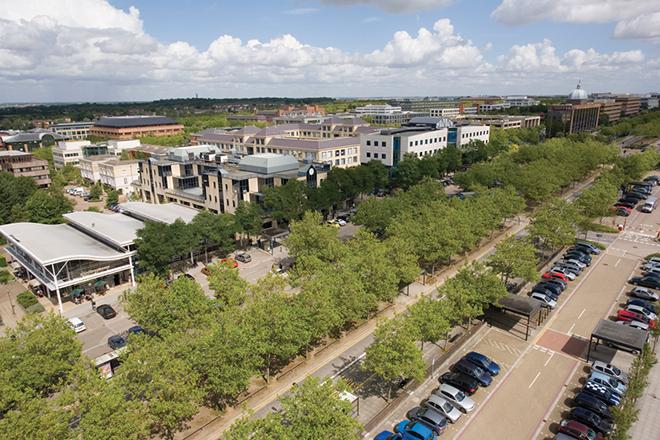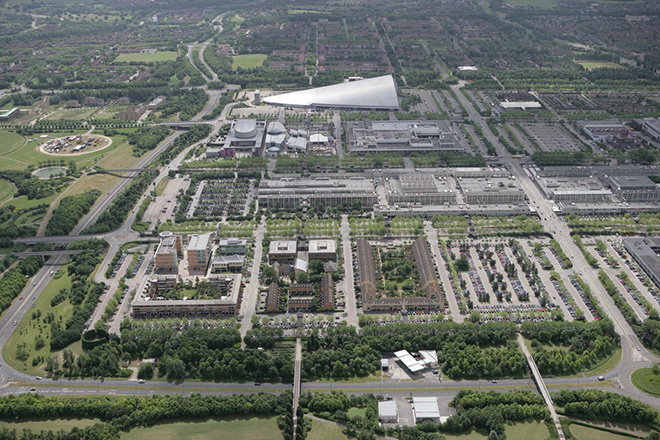David Bainbridge, a planning director for real estate experts Savills, considers the ambitions set out in a new growth strategy for Milton Keynes over the next 30 years.

THE ‘new city’ of Milton Keynes which celebrated its 50th anniversary in 2017 has yet to come of age. But now a consultation by Milton Keynes Council has set out six big ambitions for growth to the year 2050.
Designated in 1967 to help to alleviate housing problems in London, Milton Keynes has seen spurts of growth along the lines of the original masterplan prepared in 1970, with its vision of movement between housing and employment areas along grid roads, within a landscaped setting.
Despite the aspiration to build a ‘New City’ Milton Keynes has yet to gain the title. It is a successful place, often featuring highly in measures of best places to live for factors such as employment opportunities, environmental matters and travel options. It is one of the fastest growing centres in the UK. However, there is a big obstacle that could stand in the way of its ambitions and that is availability of land for development.
In March 2019 the council successfully adopted a Local Plan, Plan:MK, setting out growth targets to the year 2031. Milton Keynes is an attractive area in which to invest and with the positive economic outlook these targets look achievable on land within the borough. What is less certain – and is the subject of the current consultation – is growth beyond these targets, including land within the administrative areas of its neighbouring local authorities of South Northamptonshire, Central Bedfordshire and Aylesbury Vale.
Milton Keynes Strategy for 2050, Draft for Engagement, was published in January by Milton Keynes Council as part of the MK Futures 2050 initiative. While high on ambition and promise, it is notable that no other local authorities have lent their names to the consultation document. There is some co-operation between the authorities and potential for closer alignment in due course but, for the time being, the consultation is solely under the Milton Keynes Council banner.
The Strategy for 2050 refers to the wider city area as ‘Metropolitan’ Milton Keynes and shows growth opportunity on most sides of the existing built-up area, including further growth on the other side of the M1 motorway and further expansion to the north west, south west and south east. The vision could see the population of Metropolitan Milton Keynes growing to 500,000 people by 2050, meaning the building of nearly 3,000 new homes each year to meet demand.

This scale of ambition is not new. A 2017 report by the National Infrastructure Commission suggested exactly such an ambition through intensification, meaning redevelopment within the existing built-up areas of Milton Keynes and the continued expansion on to surrounding green fields. What is new is the ability to work out the preferred locations for development in the diagram showing the recommended spatial strategy. This is long overdue for such an important location along the Oxford-Cambridge Growth Arc.
With sustainability and biodiversity high on the national and international agenda, it is right that Milton Keynes, with its almost 3,000 hectares of green and open space, is looking to balance development pressures and the environment. For example, the grid road system – held in high affection by many – has in the consultation evolved into the term grid routes. This points to a desire to move away from reliance on cars while promoting public transport systems including a Mass Rapid Transport Network.
The consultation, which includes various public meetings, ends on April 17 2020. Milton Keynes Council will consider the responses and this will be used to draw up a new draft Local Plan as a replacement for Plan: MK. Whether other local authorities will be given access to responses and aim to do the same remains to be seen.
The authorities need to go beyond the statutory duty in plan-making terms to co-operate and really get to grips with the infrastructure requirements, environmental impacts and mitigation and, perhaps most importantly of all, the political dynamics that runs with proposals for development on green fields.
With authorities in the rest of Buckinghamshire about to become unitary and those in Northamptonshire set to do the same next year, now is not a period of stability. What is not being talked about in the context of the Milton Keynes Strategy for 2050 is the reshaping of local government boundaries. The creation of the new unitary authorities is one of the biggest changes since the establishment of boundaries in 1974, which have largely remained unchanged.
There was a time when regional planning promised to bridge divisions at the local level of government but that has yet to materialise. There is potential that the anticipated planning reforms will include a vision that transcends the local level while attempting to retain local interest and attachment.
It is clear that the original ambition to create a ‘New City’ has not been lost. However, the future growth of Milton Keynes requires partners to unite behind a single vision. Whether the current consultation Milton Keynes Strategy for 2050, Draft for Engagement is the stepping stone towards this remains to be seen.



